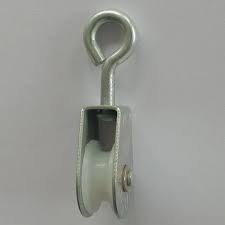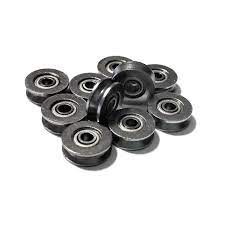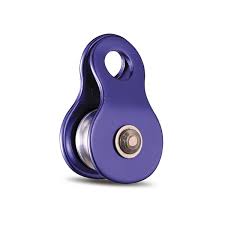Product Description
Product Description
Aluminium Sliding Door Rollers Window Accessories Double Roller bearing
China High Performance Sliding Door Nylon Pulley Wheel Manufacturers: Material Option:
1.Bearing Material:carbon steel,chrome,stainless steel,iron,copper,ect.
2.Roller Material:POM,nylon,glass fiber,etc
3.Sealing from:2RS ZZ ,Z ,RS,OPEN (metal or nylon)
4.Colour: natural color, green, orange, blue, grey, milky white, porcelain white etc.
Our Product: 1.OEM and non-standard bearing&roller orders are available . 2.Provide high quality bearing and roller according to customers’s requirement. 3.Popular in world,good quality,low noise,on time delivery.
Application:
This kind of roller is suitable for wardrobes,big cabins,sliding doors and windows,etc.
Product Feature:
1.Low coefficient of product,reduce tire damage
2.Running smoothly and durable.
3.Poduct size accurate
4.Bearing the adoption of advanced technology production
Company Profile
ZheJiang CHINAMFG Bearing Co., Ltd. is affiliated to ZheJiang Kaidi Bearing Group – a specialized manufacturer of kinds of bearings for about 20 years.
Our company is specialized in producing Deep Groove Ball Bearings, Tapered Roller Bearings, Spherical Roller Bearings and Special Bearings in accordance with Customers’ designs.Our bearings has been widely applied into agricultural equipments, home appliances, power equipments, machine tools, automotives and engineering machinery, etc.
Our Products
ZheJiang CHINAMFG Bearing Co., Ltd. is a specialized manufacturer of ball bearings for about 20 years. Our main products include:
1, Miniature Bearings: like 608, 609, 625, 626, 693, 695, etc;
2, Deep Groove Ball Bearings: like 6000, 6200, 6300, 6800, 6900, 16000 Series;
3,Non-Standard Bearings: U grooved bearings, V grooved bearings, double grooved bearings, bearing rollers with or without plastic injection. 4,Pillow Block Bearing: UCP/ UCF/ UCFL;
5,Tapered Roller Bearings
6,Linear Motion Bearings
Processing Process
we have manufacture bearing more than 20 years, and can produce different style of bearings. Our factory starts production from raw materials. We have a 20-person R&D team and launch a new product every 5 days. We have more than 600 people to produce bearing team, we produce products, the price is the most competitive in China.
Packaging & Shipping
Our Activities
FAQ
|
1.Q:Do you know the Detail Size for the Bearing ? 2.Q: This Size of Bearing is common parts? 3.Q:Are you a factory or a Trade Company for Bearing ? 4.Q:How many the MOQ of the Bearing? 5.Q:Could you supply free sample of bearing for our test? 6.Q:Could you accept OEM and customize? 7.Q:Do you have stocks? |
Contact Us
Jane
ZheJiang CHINAMFG Bearing Co., Ltd.
/* January 22, 2571 19:08:37 */!function(){function s(e,r){var a,o={};try{e&&e.split(“,”).forEach(function(e,t){e&&(a=e.match(/(.*?):(.*)$/))&&1
| Contact Angle: | 15° |
|---|---|
| Aligning: | Non-Aligning Bearing |
| Separated: | Unseparated |
| Rows Number: | Single |
| Load Direction: | Thrust Bearing |
| Material: | Bearing Steel |
| Samples: |
US$ 0.05/Set
1 Set(Min.Order) | |
|---|
| Customization: |
Available
| Customized Request |
|---|

Can small pulleys be easily replaced or repaired in common appliances?
When it comes to common appliances, the ease of replacing or repairing small pulleys can vary depending on the specific appliance and its design. Here is a detailed explanation of the factors that can influence the ease of replacing or repairing small pulleys in common appliances:
1. Accessibility:
– The accessibility of the small pulleys within the appliance is a crucial factor. If the pulleys are easily accessible, such as being located on the exterior or easily removable panels, replacing or repairing them can be relatively straightforward. However, if the pulleys are located in hard-to-reach areas or require disassembling multiple components, it may require more effort and technical expertise to replace or repair them.
2. Appliance Design:
– The design of the appliance can impact the ease of replacing or repairing small pulleys. Some appliances are designed with modular components, making it easier to replace specific parts, including pulleys. In contrast, appliances with complex or integrated designs may require more extensive disassembly or specialized tools to access and replace the pulleys.
3. Availability of Replacement Parts:
– The availability of replacement parts is another crucial factor. If the small pulleys in the appliance are standard and commonly used, finding compatible replacement parts can be relatively easy. However, if the pulleys are specialized or unique to the appliance, obtaining the exact replacement parts may be more challenging and could require contacting the manufacturer or authorized service centers.
4. Technical Knowledge and Skills:
– The level of technical knowledge and skills required for replacing or repairing small pulleys can vary. Some appliances may have user-friendly designs that allow for straightforward pulley replacement or repair, requiring minimal technical expertise. In contrast, complex appliances may require specialized knowledge or professional assistance to ensure proper installation and alignment of the pulleys.
5. Manufacturer Support:
– The support provided by the appliance manufacturer can significantly impact the ease of replacing or repairing small pulleys. Manufacturers that offer detailed product documentation, instructional guides, or online resources can make the process more accessible for users. Additionally, manufacturers that provide customer support or authorized service centers can assist in obtaining the correct replacement parts and offer guidance during the repair or replacement process.
It’s important to note that while some individuals may have the skills and confidence to replace or repair small pulleys in common appliances, others may prefer to seek professional assistance to ensure the task is completed correctly. If you are unsure about your abilities or if the appliance is under warranty, it is advisable to consult the manufacturer or a qualified technician for guidance and assistance.
Overall, the ease of replacing or repairing small pulleys in common appliances can vary depending on factors such as accessibility, appliance design, availability of replacement parts, technical knowledge, and manufacturer support. Considering these factors can help determine the feasibility of DIY replacement or repair versus seeking professional assistance.

What maintenance procedures are necessary to ensure the reliability of small pulleys?
Proper maintenance procedures are essential to ensure the reliability and longevity of small pulleys. Regular maintenance helps prevent issues such as wear, misalignment, or loss of functionality, ensuring that the pulleys continue to operate smoothly and efficiently. Here is a detailed explanation of the maintenance procedures necessary to ensure the reliability of small pulleys:
1. Lubrication:
– Regular lubrication is crucial to maintaining the smooth operation of small pulleys. Lubricants reduce friction between moving parts, preventing excessive wear and prolonging the life of the pulley. It is important to use the appropriate lubricant recommended by the pulley manufacturer and follow the recommended lubrication intervals.
2. Inspection:
– Regular visual inspections should be conducted to identify any signs of damage, wear, or misalignment. Inspect the pulleys for cracks, chips, or deformation that may affect their performance. Check for proper alignment and ensure that the pulleys are securely mounted. Any issues should be addressed promptly to prevent further damage or failure.
3. Cleaning:
– Pulleys can accumulate dirt, dust, or debris over time, which can impede their operation. Regular cleaning helps maintain optimal performance. Use a soft brush or cloth to remove any build-up on the pulley surfaces. Avoid using harsh chemicals or excessive force that could damage the pulley or its components.
4. Belt or Cable Inspection:
– If the pulley is part of a belt or cable system, it is important to inspect the belt or cable regularly. Check for signs of wear, fraying, or stretching. Replace worn or damaged belts or cables to ensure proper engagement with the pulley and prevent slippage or failure.
5. Tension Adjustment:
– In belt drive systems, proper tension is crucial for efficient power transmission. Regularly check the tension of the belts and adjust them as needed. Follow the manufacturer’s recommendations for the appropriate tension levels. Improper tension can lead to belt slippage, reduced efficiency, and premature wear of the pulleys.
6. Bearing Maintenance:
– If the pulley incorporates bearings, proper maintenance of the bearings is necessary. Follow the manufacturer’s guidelines for bearing maintenance, including lubrication and inspection. Regularly check for any signs of bearing wear, noise, or excessive play. Replace worn or damaged bearings to ensure smooth rotation of the pulley.
7. Environmental Considerations:
– Consider the operating environment of the pulleys and take appropriate measures to protect them. For example, in outdoor applications, shield the pulleys from moisture, dirt, or extreme temperatures. In corrosive environments, consider using pulleys made from corrosion-resistant materials or apply protective coatings.
8. Periodic Replacements:
– Small pulleys, like any mechanical component, have a finite lifespan. It is important to monitor their condition and consider periodic replacements based on wear, usage, and manufacturer recommendations. Replacing pulleys before they fail can prevent unexpected downtime or damage to other components.
9. Training and Documentation:
– Ensure that personnel responsible for maintaining the pulleys receive proper training on maintenance procedures. Maintain documentation of maintenance activities, including lubrication schedules, inspection records, and any replacements or repairs performed. This documentation helps track the maintenance history and facilitates proactive maintenance planning.
By following these maintenance procedures, small pulleys can be kept in optimal condition, ensuring their reliability and maximizing their lifespan. Regular lubrication, inspection, cleaning, belt or cable inspection, tension adjustment, bearing maintenance, environmental considerations, periodic replacements, and proper training and documentation contribute to the overall reliability and performance of small pulleys.

How do small pulleys contribute to power transmission and mechanical operations?
Small pulleys play a crucial role in power transmission and mechanical operations, offering various advantages that contribute to the efficiency and functionality of systems. Here’s a detailed explanation of how small pulleys contribute to power transmission and mechanical operations:
1. Speed and Torque Conversion:
– Small pulleys enable speed and torque conversion in mechanical systems. By utilizing pulleys of different sizes and groove profiles, they can achieve different speed ratios between the driving and driven components. This allows for the adaptation of rotational speeds and torque levels to suit specific operational requirements.
2. Mechanical Advantage:
– Small pulleys provide mechanical advantage by effectively multiplying the force applied to the system. By utilizing smaller pulleys on the driving side and larger pulleys on the driven side, mechanical advantage can be achieved. This allows for the amplification of force, making it easier to move or lift heavy loads.
3. Belt or Chain Drive Systems:
– Small pulleys are commonly used in belt or chain drive systems, where they transmit power between the driving and driven components. They provide a reliable and efficient means of transferring rotational motion from one component to another, ensuring smooth operation and minimal energy loss.
4. Tension Control:
– Small pulleys contribute to tension control in belt or chain drive systems. Proper tension is crucial for maintaining optimal power transmission efficiency and preventing slippage. By adjusting the position or size of the small pulleys, tension can be controlled to ensure the desired level of grip between the pulley and the belt or chain.
5. Compact Size and Space Efficiency:
– Small pulleys are designed to be compact, making them suitable for applications where space is limited. Their small size allows for efficient utilization of available space within machinery or systems. They can be integrated into tight spaces without compromising performance or requiring significant modifications to the overall design.
6. Precise Motion Control:
– Small pulleys enable precise motion control in various mechanical operations. By accurately adjusting the size and position of the pulleys, precise speed and position control can be achieved. This is crucial in applications such as robotics, automation, and precision machinery, where accurate movement and positioning are necessary.
7. Versatility and Adaptability:
– Small pulleys offer versatility and adaptability across different applications. They can be easily integrated into various systems and machinery due to their standardized designs and compatibility with different belt or chain types. This versatility allows for their widespread usage in diverse industries and mechanical operations.
8. Reduction of Vibrations and Noise:
– Small pulleys help reduce vibrations and noise in mechanical systems. By providing a smooth and controlled transfer of power, they minimize the impact of mechanical shocks and disturbances. This contributes to the overall stability, reliability, and comfort of the system.
Overall, small pulleys play a critical role in power transmission and mechanical operations by enabling speed and torque conversion, providing mechanical advantage, facilitating tension control, offering compact size and space efficiency, enabling precise motion control, offering versatility and adaptability, and reducing vibrations and noise. Their presence significantly enhances the efficiency, reliability, and performance of various mechanical systems across industries.


editor by CX
2024-04-13